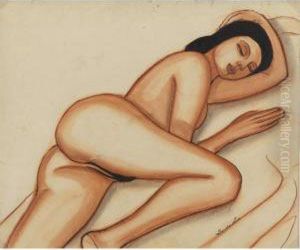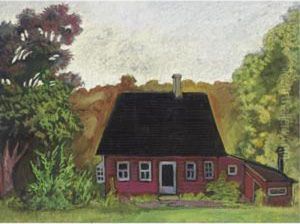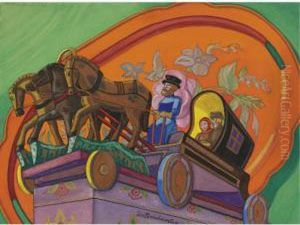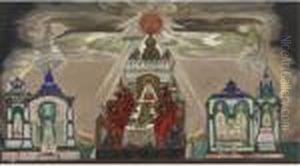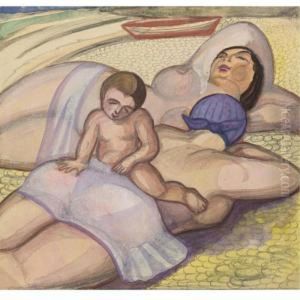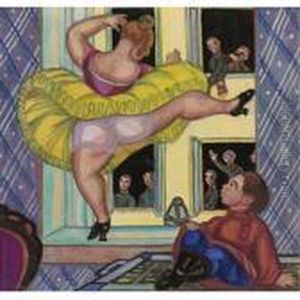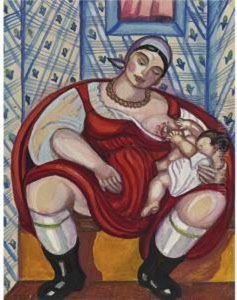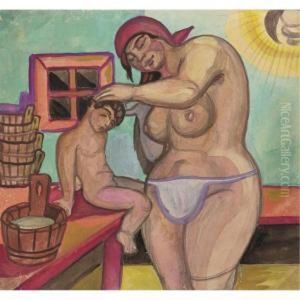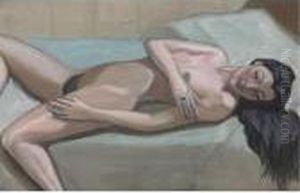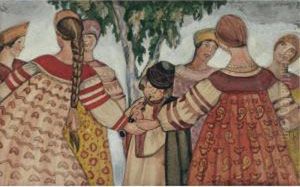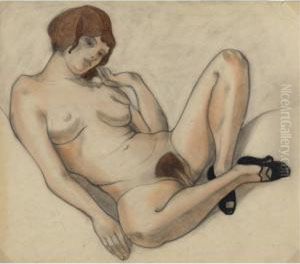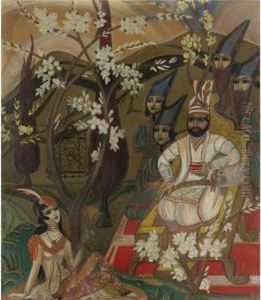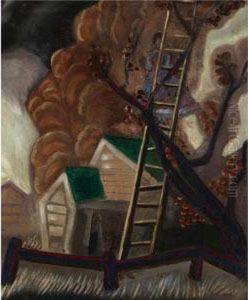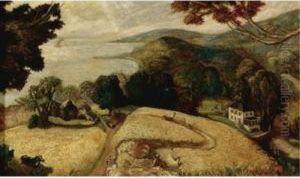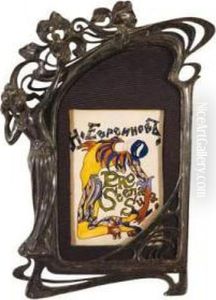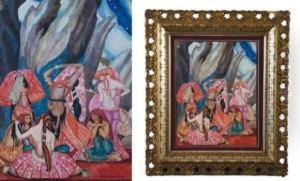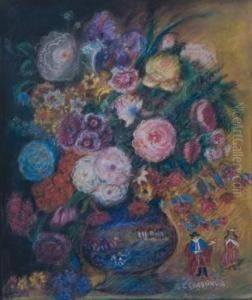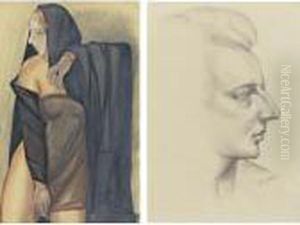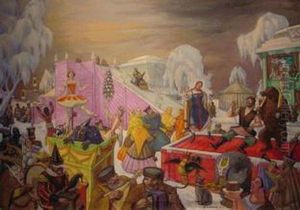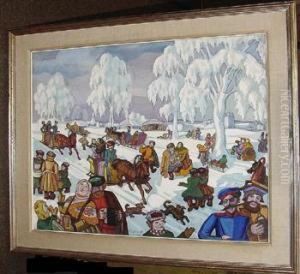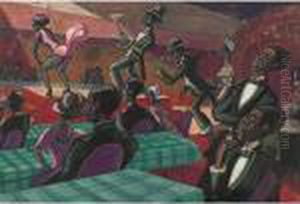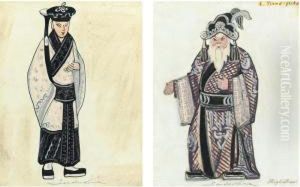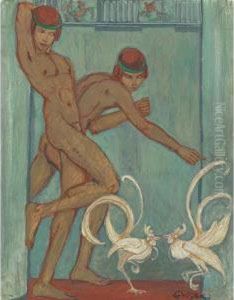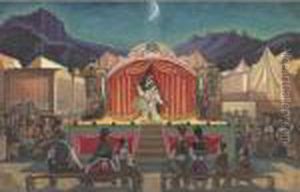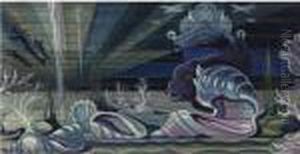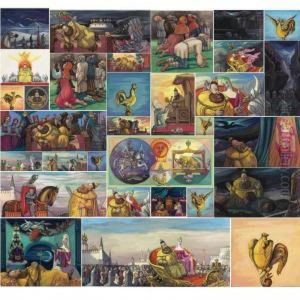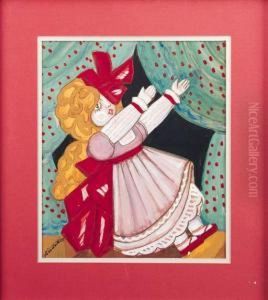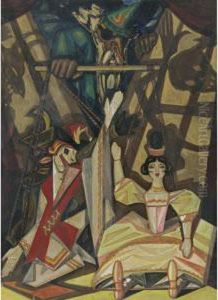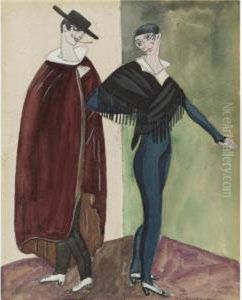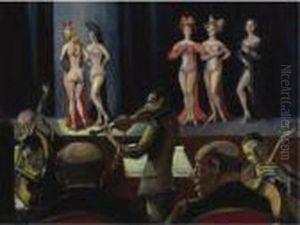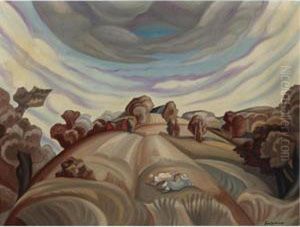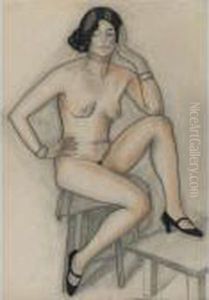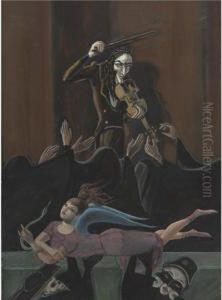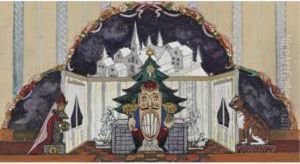Serge Iurevich Soudeikine Paintings
Serge Soudeikine, also known as Serge Sudeikin, was a Russian artist and stage designer, born in 1882 in Smolensk, Russia. He was part of the Mir Iskusstva (World of Art) movement, which was a significant force in the Russian cultural scene at the turn of the 20th century. Soudeikine's family was well-established in the Russian artistic community, which provided him with an environment conducive to his artistic development.
He studied at the Moscow School of Painting, Sculpture and Architecture, and later at the St. Petersburg Academy of Arts, which was a hub for the burgeoning Russian avant-garde. During his time in St. Petersburg, he became involved with the Mir Iskusstva group, where he worked alongside other prominent artists such as Alexandre Benois and Leon Bakst. This group was known for its contributions to the revival of Russian decorative art and for its influence on the Russian ballet.
Soudeikine's work was marked by a bold use of color and dramatic composition, which made him a sought-after set and costume designer for theater productions. He was particularly noted for his work on ballet and opera stages, where his designs contributed to the lavish and exotic visual experiences that became hallmarks of Russian performance art in the pre-Revolutionary period.
After the Russian Revolution, Soudeikine emigrated to the United States where he continued his career as a stage designer. He became involved with the Metropolitan Opera and designed sets for Broadway productions, bringing his distinctive style to the American theater scene. His work in the US, while sometimes overshadowed by his earlier Russian accomplishments, showed a versatility and an ability to adapt to a new cultural environment.
Serge Soudeikine's career was a bridge between the world of pre-revolutionary Russian art and the dynamic scene of American theater in the first half of the 20th century. Despite facing the challenges of exile and cultural adaptation, his influence on stage design was profound and lasting. He died in 1946 in Nyack, New York, leaving behind a legacy of vibrant and innovative art that continues to be celebrated in both Russia and the United States.
